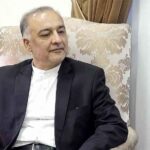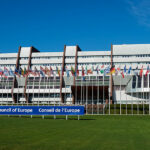The highest peak in the region with an average height of 1,100 m is Gamishdag (3724 m), which is part of the Murovdag range. The high-altitude area of the region covers 26,000 ha, the medium-altitude area 34,800 ha, and the foothill area 44,300 ha. The region is also famous for its minerals: Icelandic spar in Nagorno-Karabakh (Hadrut and Martuni Districts), gypsum (Aghdara and Askeran Districts), marble (Askeran District), galena, gold, silver, lead, cadmium, sulfur and tin (Aghdara and Hadrut Districts), hematite, magnetite and copper (Aghdara, Hadrut and Martuni Districts) (Zakharyan, 1969: 8-9).
About one-third of the region’s territory is covered with beech and oak trees, which serve as raw material resources for local timber industry. The territory of Nagorno-Karabakh remained undefined until it gained autonomy under Soviet rule. Therefore, after the decision of the Central Executive Committee of the Azerbaijan SSR to establish an autonomous oblast in Nagorno-Karabakh in accordance with the minutes of July 5, 1923, the demarcation of the region became a subject of controversy.
Initial demarcation
The initial borders of Nagorno-Karabakh were very chaotic. There are very few maps showing the borders of Karabakh in the early 1920s. For example, the first atlas of the USSR, published in 1928, showed different borders of Nagorno-Karabakh on maps of the Armenian SSR and the Azerbaijan SSR. The borders of Nagorno-Karabakh on the first maps published by the Central Executive Committee of the Azerbaijan SSR were not real borders, but schematic images of the territory included in the autonomous oblast. Another methodological problem arises with the analysis of the ethnographic border of Nagorno-Karabakh. Ethnographic data for the settlements within the Nagorno-Karabakh borders were obtained from two sources—a village survey conducted in 1886 by the Tsarist government on the basis of the census data and a 1921 rural census of the Azerbaijan SSR.
A comparison of these two sources allows for a fairly accurate analysis of the ethnographic composition of the NKAO within the 1923 borders. However, the only source of ethnographic data for the settlements outside the 1923 borders was the 1886 village census. In the 19th and early 20th centuries, part of the Azerbaijani population living in the region between the Kura Lowland and the mountainous part of Karabakh was nomadic. Since nomads spend winters in the lowlands and summers in the pastures in the Karabakh mountains, there is a problem of determining their permanent residence.
Most of the nomadic population permanently settled in villages as a result of the policy pursued by the Soviet authorities from the late 1920s to the mid-1930s. As a result, some Azerbaijanis living seasonally in Karabakh were left out of the region (Saparov, 2014:118). Besides, with the encouragement of Tsarist Russia, Russians (Molokans) settled in the region in the late 19th century. Unfortunately, there is no ethnographic data about these settlements. After the 1886 census, the Russians who came to the area left the region during the Civil War. Thus, during the 1921 census, no information was provided about the Russian settlements. Shortly after the official declaration of Karabakh’s autonomy, the commission, which was to decide on the statute and borders of Karabakh, adopted the first border design in July 1923. The following figure shows the changes made in the following years in the first border design adopted in 1923. (Saparov, 2014:119).
Disputed territories
The design showed the main Armenian settlements in the mountainous part of Karabakh, but there were some important exceptions in the plan that did not satisfy the Armenians. In the initial border design, a number of Armenian villages, the city of Shusha and its surrounding villages were not included in the borders of the autonomy. At the time the border design was prepared, the population of Shusha, along with the surrounding villages, was predominantly Azerbaijani. After a failed uprising against the Musavat army in March 1920, almost all of the city’s Armenian population left the city. Shusha was an important city for Armenians as well as Azerbaijanis, and they protested against the separation of Shusha from Karabakh.
Another disputed territory was the lands of the Skobolev Russian community near the Khonashen (Martuni) region in the eastern part of Karabakh before World War I. The Russian population fled the region during the Civil War, and both Armenians and Azerbaijanis claimed these lands. Geographically, the area was closer to the lownland Karabakh, but the Armenians of Nagorno-Karabakh claimed the area because of the lack of arable land in the mountains. Thus, after many discussions, the claims of the Karabakh Armenians were accepted. (Saparov, 2014:120)

The minutes of the meeting of the Presidium of the Central Committee of the AСP(b) adopted on July 16, 1923
Resolution:
a) To include in the Karabakh autonomy the lands of the Skobolev Community left over from the destroyed Russian villages.
b) The city of Shusha shall be considered the territory of the Nagorno-Karabakh Autonomous Oblast.
c) To form 2 districts from the lowland part of Karabakh.
d) To form “Kurdistan Autonomy” from the areas inhabited by Kurds.
e) To instruct the Council of People’s Commissars to determine the exact borders and administrative centers of these regions.
f) To form the Revolutionary Committee of the Nagorno-Karabakh Autonomous Oblast consisting of 5 members: Chairman Armenak Karagozov and members Bunyadzade, Kostanyan, Kafiyev and Chalyan.
g) To ask the Transcaucasian Committee of the Russian Communist Party to appoint Comrade Kostanyan as Secretary of the Regional Committee. If Kostanyan rejects the appointment to the post of Secretary of the Regional Committee, Manutsyan will be appointed to replace him.
h) To form the Regional Committee of the Nagorno-Karabakh Autonomous Oblast consisting of 9 people, including Kostanyan (Secretary), Manutsyan, Karagozov, Bunyadzade, Arzanyan and Chalyan.
i) To task the commission consisting of Karagozov, Bunyadzade, Chalyan, Vareykis and Manutsyan with drafting the final version of the Statute on the Nagorno-Karabakh Autonomous Oblast. To task Karagozov with convening the commission, setting a three-day period for the commission’s work.
j) To task the Secretariat of the Central Committee, subject to approval of the Presidium of the Central Committee, with organizing district committees and uyezd executive committees in the two regions of Kurdistan and lowland Karabakh.
Kirov, Secretary of the Central Committee of the Azerbaijan CP. (Guliyeva,1989:96).
Attempts to separate Shusha from Nagorno-Karabakh
Despite the fact that the city of Shusha was indicated in the original minutes as the territory of Nagorno-Karabakh, the Azerbaijani Communists continued to fight for the annexation of the city to Kurdistan. On July 24, 1923, the Nagorno-Karabakh Committee was replaced with a five-member Provisional Revolutionary Committee led by Karagozov. The Provisional Revolutionary Committee was to govern the autonomous region during the transition period until the convocation of the Provincial Council. (Guliyeva, 1989:98)
In late August, the Karabakh Regional Committee appealed to the Central Executive Committee of the Azerbaijan SSR to expedite the publication of the Statute on the Nagorno-Karabakh Autonomous Oblast and its borders. During this period, the Central Executive Committee of the Azerbaijan SSR, through the leadership of the newly formed Kurdistan Uyezd, sought concessions in favor of the latter in the territorial issue of Karabakh. On August 9, 1923, on behalf of the people of Shusha, their authorized representatives Rustam Aliyev, Ibrahim Musayev, Bashir Sarabi and Haji Shamshiyev sent a letter to the Central Executive Committee of Azerbaijan. The letter reads:
“We protest against the inclusion of the city of Shusha and the surrounding Muslim villages in the Autonomous Karabakh Oblast, stating that the city of Shusha and the surrounding Muslim villages are economically connected with the population of the newly formed Kurdistan Uyezd. Therefore, the population has delegated us to raise the issue of including the city and surrounding villages in the Kurdistan Uyezd. In view of the above, we are convinced that the Soviet government will not ignore the interests of the people, but will always welcome their just wishes. Therefore, we ask the Central Executive Committee of Azerbaijan not to refuse the request of the population of Shusha and its surrounding villages to join the Kurdistan region. (Hasanli, 2012:5)
At the end of the letter, the authorized representatives of Shusha and the surrounding Muslim villages wrote, “If it is not possible to fulfill our request above for some reasons of state or other considerations, we ask to keep Shusha as the center of Nagorno-Karabakh and not transfer the center to Khankendi.” Upon learning of the appeal of Shusha residents to the Central Executive Committee of Azerbaijan, the Armenian leadership of the newly formed autonomous region sent a telegram to Sergei Kirov, saying that it was a matter of urgency. Secretary of the Shusha Uyezd Executive Committee S. Manutsyan wrote that such appeals were a clear indication of the danger of the merchants, who felt that the relocation of the center would lead to the closure of trade in Shusha, losing their expected income. However, despite the resistance of the Armenian leadership of the region, the people of Shusha continued their efforts to not remain within the autonomous region. On January 4, 1924, Mirish Mirbagirov and Alasgar Guliyev, as authorized representatives of the people of Shusha, sent a telegram to Sergei Kirov, Mir Jafar Bagirov and Sergo Orjonikidze to the Transcaucasian Congress of Soviets demanding on behalf of the Azerbaijani population the annexation of Shusha to the Kurdistan Uyezd. Only after serious efforts on the part of the Azerbaijani population of Shusha, the Central Committee of ACP instructed the Karabakh Regional Committee at its meeting on April 17, 1924 to include Shusha together with the surrounding Muslim villages into a separate administrative district (Guliyeva, 1989:145).
Husu Hajiyev, Chairman of the Executive Committee of the newly formed Kurdistan Uyezd, made the following suggestion in the Bakinskiy Rabochiy newspaper: “The village of Abdallar (now Lachin) cannot be the center of Kurdistan. There is a shortage of water in this area. It is acceptable for us for Shusha to be the center of Kurdistan. The climate and position of both Shusha and Kecheldag are more favorable for us than those of Abdallar.” (Saparov, 2014:120).
The border commission was convened to discuss this and similar issues. A meeting of the commission was held to define the borders between the Lowland Karabakh and Nagorno-Karabakh, as well as between Nagorno-Karabakh and Kurdistan. By the resolution of this commission, a total of 169 villages of Javanshir, Shusha and Gubadli districts were transferred to the Nagorno-Karabakh Autonomous Oblast. The minutes of the meeting were as follows.
Agenda:
- The situation in the Nagorno-Karabakh Autonomous Oblast.
- The borders between Nagorno-Karabakh and lowland Karabakh and Nagorno-Karabakh and Kurdistan, and the villages that are part of the territory of Nagorno Karabakh.
- The form of government and administrative division of lowland Karabakh.
- The form of government and administrative division of Kurdistan.
Resolution:
To adopt and apply the Statute on the provincial executive committees of 1923 as the basis for the regulation of the Nagorno-Karabakh Autonomous Oblast.
To include the following Armenian and Turkic villages in the territory of Nagorno-Karabakh:
Javanshir Uyezd: Hasanriz, Umudlu, Imarat Garvand, Kasapet, Chapar, Gozlu, Gizilgaya, Yayiji, Zardahach Bullugaya, Lulasaz, Bazarkand, Kolatag, Damgali, Dovshanli, Chormanli, Vang, Drmbon, Getavan, Kichik Garabay, ,Ulu Garabay, Shahmasur, Nerishtad, Aghdara, Charaktar, Oratag, Srkhavand, Margushevan, Hasangaya, Levonarkh, Mingrelsk, Chardagli, Davadashi, Orlovo-Denisovka, Gazanchi, Janyatag, Gulyatag, Talysh, Mehmana, Childiran, Karmiravan, Dastagir, Tonashen, Madaghiz, Damirli, Yukhari Chayli and Ashagi Chayli.
Shusha Uyezd: Garagotuk, Ulubaba, Gayabashi, Sadigeshik, Shalva, Gishlagkend, Bashgulag, Mehdikend, Badara, Sunjinka, Khinzestan, Ismayilbeyli, Mikayilli, Aylisli, Khalfali, Khojaly, Gushchular, Korpafat, Zarisli, Nakhichevanik, Pirjamal, Dahraz, Javadlar, Agbulag, Aranzamin, Lysogorsk, Karkijahan, Jamilli, Ballija, Gaybalikend, Khankendi, Khanagah, Madatkend, Yukhari Yemishjan, Demirchiler, Signag, Bahlul, Chanagchi, Ashagi Gilinjbag, Garabulag, Gushchubaba, Pirlar, Khachmach, Mirzakendin, Tazabina, Garali, Mukhtarkend, Dagdagan, Harov, Dashkend, Shushikend, Dashalti, Keshishkend, Kandhurt, Gozludara, Janhasan, Agakend, Yolabakend, Shushulu, Mirikand, Guneychartar, Takir, Garadagli, Sos, Shtorashen, Khirman, Zavadikh, Gargar, Mavas, Aramas, Bilbilyak, Agbulag, Kuzumkend, Ningijan, Tug, Azykh, Zardanashen, Shekher, Ashagi Gilichbag, Kichik Demya, Heshan, Shahyeri, Pirmahali, Atagut, Akaku, Suslu Govshanli, Domi, Susanlig, Salaketin, Chiraguz.
Gubadli Uyezd: Agjakend, Arakul, Bunyadli, Panahli, Dagdoshu, Gagartsi, Dashbashi, Garitapa, Jamiyyat, Boyuk Taglar, Chagaduz, Kababyurd, Vang, Arush, Chinarli, Gochbeyli, Mushkulat, Mulkudara, Norashen, Tagaser, Sor, Mirikend, Edishe, Agbulag, Akhullu, Kichulu, Bulutan, Gudukchu, Giziloba, Khirmanjig, Jilen, Heshan, Chorekli, Hadarli. (Guliyeva, 1989:102).
The last, fifth paragraph of the decree of the Central Executive Committee of Azerbaijan on the establishment of the Autonomous Karabakh Oblast stated that in order to draft the Statute of the Autonomous Oblast and to make the Autonomous Karabakh Oblast a de facto administrative unit, as well as to determine the borders of the Autonomous Oblast, a mixed commission was to be established, consisting of representatives of the central bodies of Nagorno-Karabakh, lowland Karabakh, Kurdistan and Azerbaijan SSR. The commission was instructed to complete its work by August 15. Therefore, in order to give legal status to the Autonomous Karabakh Oblast, the Presidium of the Central Committee of the ACP(b) discussed the drafting of its statute on July 14, 1923. Since Aliheydar Garayev was unable to participate, Dadash Bunyadzadeh was instructed to chair the commission consisting of A. Karagozov, Ch. Yildirim, M. Khanbudagov, M. Chalyan and S. Manutsyan. The commission was to draft the statute as soon as possible and submit it to the Presidium for approval.

In the last days of July 1923, an extended meeting of the commission drafting the statute of the Nagorno-Karabakh Autonomous Region was held. At the meeting, the statute adopted for the provincial executive committees in 1923 was taken as a basis for that of the Nagorno-Karabakh Autonomous Oblast. Although from the administrative point, the autonomous oblast was being created because of the Armenian population living in Karabakh, the commission decided to include a large number of Turkic villages in Karabakh. Even though the commission decided by an overwhelming majority with three dissenting votes that the city of Shusha and the village of Khonashen belonged to lowland Karabakh, A. Karagozov insisted that the city of Shusha and the village of Khonashen should remain part of Nagorno-Karabakh. Karagozov’s position was strongly supported by six Azerbaijani officials present at the meeting, including the chairman of the commission (Hasanli, 2012:5).
Mir Jafar Bagirov regarded the transfer of Shusha, a predominantly Muslim city, to Nagorno-Karabakh as a misstep. He wrote, “There are Khalfali, Zarisli, Musulmanlar and a number of other Muslim villages with a population of 8,000 around Khankendi, Shusha and Abdallar, which are easier to govern from Abdallar than from Khankendi. These Muslim villages were given to Nagorno-Karabakh only because one of them is Galadarasi, inhabited by about 1,150 Armenians. For some reason, all these areas have been annexed to Khankendi.” (Alekseyev, 2010:41).
Official announcement of the NKAO borders
The issue of Karabakh’s borders was discussed again on October 18. A month later, on November 15, 1923, one of the members of the border commission, Bunyadzadeh, spoke about the disputed lands of the Khonashen (Martuni) region and proposed dividing the territory between Muslims and Armenians. Until April 1924, the issue of Karabakh’s borders remained unresolved. On April 17, the Presidium of the Central Executive Committee of ACP(b) set up a new 6-member commission. This commission was to deal with the “full determination of the administrative borders of the Nagorno-Karabakh Autonomous Oblast” and to complete this task by May 1, 1924. However, the debates on these issues dragged on again. In June 1924, the border commission discussed the controversial situation around the lands of the Skobolev Community (especially Kuropatkino). The commission confirmed that the village remained part of the Nagorno-Karabakh Oblast. In the summer of 1924, the discussion of the legal status of Karabakh was still ongoing. Nagorno-Karabakh Armenians drafted a constitution for the region, and this issue was discussed at a meeting of the Central Executive Committee of Azerbaijan. However, according to the Soviet administrative hierarchy, Nagorno-Karabakh had the lowest possible autonomous status, and the constitution was not adopted. (Saparov, 2014:121)
On November 26, 1924, the Statute “On the Nagorno-Karabakh Autonomous Oblast” was published in the supplement to the Bakinskiy Rabochiy newspaper. The first article of the statute stated that “The Autonomous Nagorno-Karabakh Oblast is an integral part of the Azerbaijan SSR.” According to the second article, clerical and judicial proceedings and school education in the NKAO were to be conducted in the native language. According to the third article, the NKAO was to participate in the work of the republican bodies of Azerbaijan on a proportionate basis. On the issue of the official and native languages of the population of the Autonomous Oblast, the Statute indicated that the common language used in the state, public administrations and organizations of the region is Armenian for the Armenian population and Turkic for the Turkic population.
On September 18, 1923, the issue of renaming the city of Khankendi was discussed at a meeting of the Karabakh Regional Committee of the ACP(b), chaired by Manusyan and with Ter-Zakharov as secretary. The resolution of the meeting said: “In order to honor the memory of Stepan Shaumyan and 26 Baku commissars, the city of Khankendi shall be renamed as Stepanakert.” On the same day, by the decree of the Central Executive Committee of the Nagorno-Karabakh Autonomous Oblast, the city of Khankendi was renamed as Stepanakert. Although the intention of the Azerbaijani leadership was for the new name to be “Stepankend” and they even referred to Khankendi as “Stepankend” for a while in a number of official documents, the Armenians officially renamed the city as “Stepanakert.”
Thus, for the first time, an official description of the borders of Nagorno-Karabakh was published. The autonomous oblast included 201 villages. On the basis of the new design, a number of settlements were added to the early 1923 design, mainly the city of Shusha, the territory of the village of Galadarasi and the lands of the Skobolev Community. However, there were some exceptions in the resolution. The previous decision to make the village of Kuropatkino part of Karabakh was changed and it was not included in the published list of 201 villages. In 1925, 13 more villages were added to Nagorno-Karabakh, including the disputed village of Kuropatkino and the remote Armenian enclave of Maralyansarov (Saparov, 2014:121). Thus, the territory of Nagorno-Karabakh, which was 4,161 sq. km at the time of its establishment, grew to 4,338 sq. km (Geukjian, 2012:74).
Thus, in the first years of Soviet rule in the South Caucasus, the struggle for the territorial affiliation of Nagorno-Karabakh came to an end. Sergei Kirov, the leader of Azerbaijan, said at the VI Congress of the ACP(b) in May 1924 about the granting of autonomy to Nagorno-Karabakh, “Our greatest success in this area is that, albeit perhaps not completely, the issue of the so-called Karabakh has been resolved to a substantial degree.” (Guliyeva, 1989:9).
Claims of the Karabakh Armenians
Some authors, such as Vladimir Priakhin and Aleksandr Manasyan, claim that the territory of Nagorno-Karabakh, established in 1923 within the borders of Azerbaijan, includes Lachin, Shaumyan and all the territories of South Karabakh (Geukjian, 2012:72). Although Priakhin and Manasyan argue this based on the minutes adopted on July 5, 1923, not a word of it is mentioned in that document. Besides, the Armenians of Karabakh consider that it was unfair to abolish the Kurdistan Uyezd, which was a buffer zone between NKAO and Armenia, in 1929, hand it over to the Azerbaijan SSR, and legally formalize these lands as part of Azerbaijan by Stalin’s 1936 constitution. With Lachin, Kalbajar and Gubadli being Azerbaijani subjects by this constitution, NKAO became an enclave within the Azerbaijan SSR.
Another claim was about the former Karabakh melikdom of Gulustan. Ashot Khachaturyan, an Armenian publicist and an active participant of the First Karabakh War, also touches upon the Soviet government’s policy on Karabakh in Azerbaijan in the 1920s in his book The Tragedy of My People, based on his memoirs and published in Moscow in 2008. According to him, the commission headed by Aliheydar Garayev, when demarcating the Nagorno-Karabakh Autonomous Oblast in 1923, deliberately excluded a number of rich economic areas and the entire Shaumyan region (now Goranboy) from the Nagorno-Karabakh Autonomous Oblast. The author writes: “Garayev and his henchmen arbitrarily severed dozens of villages and fertile lands in the historical Gulustan province of Karabakh and the eastern foothills of the Dizag from the “mother body” and kept them out of Nagorno-Karabakh.” (Khachaturyan, 2008:23).
Of all the territory of Gulustan melikdom, only Talysh village was included in the territory of present-day Nagorno-Karabakh (Agdara region). Armenians also wanted to add to Nagorno-Karabakh the villages of Getashen and Martunashen, part of the former Khanlar District, some villages of Shamkir (Chardagli, Barsum, etc.), Dashkasan, part of Gadabay (Geukjian, 2012:75). The Armenian nationalists persisted in their claims until 1988. Nariman Narimanov also felt that these claims would not stop. He wrote on May 27, 1924, “Nagorno-Karabakh was declared an Autonomous Oblast under the strong influence of Mirzoyan. In my time, this was not possible, not because I was against this autonomy, but simply because the Armenian peasants themselves did not want it. During this period, Mirzoyan prepared the ground with the help of Armenian Dashnak teachers and raised the issue in the Transcaucasian Committee.” Nariman Narimanov was well aware that granting autonomy to Nagorno-Karabakh would not put an end to the Armenians’ claims. He said, “Next is the issue of the mountainous part of Ganja.” (Zeynalova, 2004:48).
Conclusion
We can draw a parallel with the discussion of the border issue and the discussion of the adoption of autonomy. On July 4, 1923, when the Caucasian Bureau decided to cede Nagorno-Karabakh to Armenia, the issue was reviewed by the RCP on Narimanov’s protest and the decision was made in favor of Azerbaijan. In the border issue, on the contrary, the majority in the border commission voted to include Khonashen and Shusha in the lowland Karabakh, but at the insistence of Armenak Karagozov, the issue was resolved in favor of the Armenians. Nevertheless, the Azerbaijani Communists continued the struggle to raise the issue of withdrawing Shusha from Nagorno-Karabakh in favor of the Kurdistan Uyezd. However, the original document adopted by the Caucasian Committee remained unchanged. Further persistence could result in the Azerbaijani Bolsheviks being accused of nationalism. For this reason, the issue of Shusha was not raised again. The other side’s claims to the surrounding areas continued until and after 1988.
References
Гулиева, Д (1989) К истории образования Нагорно-Карабахской автономной области Азербайджанской ССР. 1918— 1925. Документы и материалы. [Guliyeva, D (1989) On the History of the Formation of the Nagorno-Karabakh Autonomous Oblast of the Azerbaijan SSR. 1918-1925. Documents and Materials.]
Saparov, Arsene (2014) From Conflict to Autonomy in the Caucasus: The Soviet Union and the Making of Abkhazia, South Ossetia and Nagorno Karabakh.
Geukjian, Ohannes (2012) Ethnicity, Nationalism and Conflict in the South Caucasus: Nagorno-Karabakh and the Legacy of Soviet Nationalities Policy.
Zeynalova, Təranə (2004) ·Azərbaycanda milli-dövlət quruculuğu tarixindən (1920-30-cu illər) [Zeynalova, Tarana (2004) · From the History of Nation-building in Azerbaijan (1920-30)]
Хачатрян, Ашот (2008), Трагедия моего народа [Khachatryan, Ashot (2008), The Tragedy of My People]
Гасанлы, Джамиль (2011) Вопрос о Нагорном Карабахе на Кавказском бюро ЦК РКП(б) в 1920-1923 годах [Hasanli, Jamil (2011) The Issue of Nagorno-Karabakh at the Caucasian Bureau of the Central Committee of the RCP(b) in 1920-1923]
(https://www.ca-c.org/c-g/2011/journal_rus/c-g-1-2/12.shtml)
Алексеев, Георгий (2010) От Майендорфа до Астаны: принципиальные аспекты армяно-азербайджанского нагорно-карабахского конфликта [Alekseev, Georgy (2010) From Meyendorff to Astana: Principal Aspects of the Armenian-Azerbaijani Nagorno-Karabakh Conflict]
Həsənli, Cəmil (2012), Azərbaycanın sovetləşməsi və Qarabağın qara günləri. Diplomat qəzeti, №10 (158), s. 5 [Hasanli, Jamil (2012), Sovietization of Azerbaijan and the dark days of Karabakh]
(http://www.arsivakurd.org/images/arsiva_kurd/kovar/diplomat/diplomat_158.pdf)
Захарян, А.(1969) Нагорный Карабах за годы Советской власти: краткий статистический сборник. [Zakharyan, A. (1969) Nagorno-Karabakh in the Years of Soviet Government: A short statistical compendium]
Aze.Media










